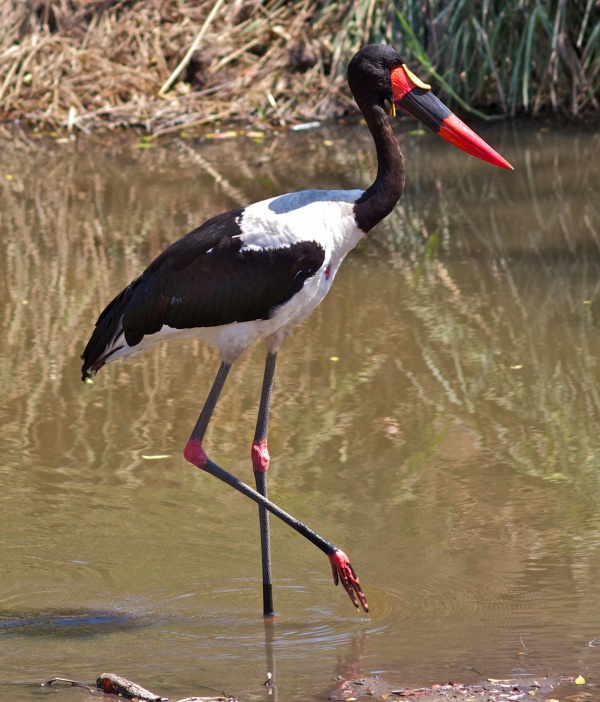Facts About Saddle-billed stork
The saddle-billed stork, often referred to as the saddlebill, is a strikingly large wading bird from the stork family, Ciconiidae. This majestic bird inhabits the landscapes of sub-Saharan Africa, from Sudan and Ethiopia down to South Africa. You can also find them in locations such as The Gambia, Senegal, Côte d'Ivoire, and Chad. Interestingly, they share a close kinship with the black-necked stork found in Asia and Australia.
These storks are impressive in size, with males noticeably larger and heavier than females. Their plumage is a captivating mix of iridescent black and white. Adding to their distinctive appearance is a red bill marked with a black band, and bright yellow wattles. Typically silent, these birds break their quietness with the sound of bill-clattering at their nests. When they take to the skies, their outstretched necks and large bills, which droop below belly height, make them easily recognizable.
Saddle-billed storks prefer habitats with open water and are often found in national parks and protected swamps. They breed in forested wetlands, where they construct large stick nests high up in trees. Their diet is quite diverse, including fish, frogs, crabs, small birds, and reptiles. They hunt with a slow and dignified grace.
In the realm of Ancient Egyptian culture, the saddle-billed stork holds a special place. It appears in hieroglyphs with the phonetic value "bꜣ." Once mistakenly identified as a jabiru, a South American bird, the saddle-billed stork has been depicted in Egyptian art since the Late Predynastic Period. Over time, these depictions hint at a shrinking range in ancient Egypt, likely due to urbanization and climate changes.

 Togo
Togo